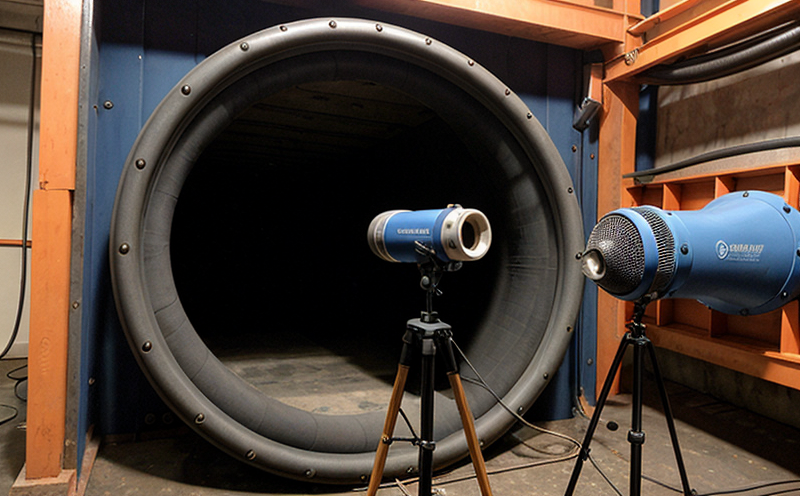ASTM E428 Reference Blocks for Ultrasonic Testing
The ASTM E428 standard specifies reference blocks that are used to calibrate ultrasonic testing equipment and ensure consistent results across different environments and operators. These blocks contain known defects such as flat-bottomed holes, notches, transverse cracks, and other flaws which serve as benchmarks for evaluating the performance of ultrasonic testing methods.
Ultrasonic testing (UT) is a non-destructive evaluation technique widely employed in various industries including aerospace, automotive, manufacturing, power generation, and construction. It allows for the detection, localization, and measurement of internal flaws or surface discontinuities without causing damage to the material being tested. By using ASTM E428 reference blocks, manufacturers can verify that their UT systems are functioning correctly and producing reliable data.
The process typically involves placing a calibrated ultrasonic transducer on one side of the block while applying sound waves through it. The transmitted signals then interact with artificial defects within the block before being detected by another transducer located at the opposite end. This interaction helps determine key parameters such as pulse-echo characteristics, attenuation coefficients, and coupling efficiency.
Proper calibration using ASTM E428 blocks ensures accurate defect sizing, flaw characterization, and overall reliability of UT inspections. It also facilitates traceability in manufacturing processes by providing a standardized reference point against which all test results can be compared. This consistency is crucial for maintaining quality standards throughout production lines.
Compliance with ASTM E428 helps organizations meet regulatory requirements while enhancing product safety and performance. For instance, aerospace companies must adhere to stringent quality control measures due to the critical nature of their products. By leveraging these reference blocks during development stages and final inspections, they can ensure that every part meets exacting specifications.
In summary, ASTM E428 provides a robust framework for ensuring accurate ultrasonic testing across diverse applications. Its role in maintaining quality standards cannot be overstated, making it an indispensable tool for professionals working in sectors where precision and reliability are paramount.
Why It Matters
The importance of ASTM E428 reference blocks lies in their ability to provide a standardized method for calibrating ultrasonic testing equipment. This standardization is essential because it ensures that all measurements made using these devices are consistent and accurate regardless of the operator or location. Without such calibration, there could be significant variability between different tests conducted under similar conditions.
- Consistency in defect detection
- Precision in flaw characterization
- Reliability of inspection results
The use of ASTM E428 blocks allows manufacturers to verify that their UT systems are functioning correctly and producing reliable data. This not only enhances the accuracy of inspections but also helps identify potential issues early in the production process, reducing costly rework or scrap.
Benefits
The primary benefit of using ASTM E428 reference blocks is improved confidence in ultrasonic testing results. By providing a known benchmark against which test data can be compared, these blocks enable accurate defect sizing and flaw characterization. This level of precision is particularly important for critical applications such as aerospace manufacturing where even minor flaws could have catastrophic consequences.
Another advantage is the enhanced reliability of inspection processes. With consistent calibration methods across different operators and locations, there is less variability in test outcomes. This consistency contributes to higher overall quality assurance levels within a company's operations.
Furthermore, compliance with ASTM E428 helps organizations meet regulatory requirements more effectively. Many industries have strict standards governing the safety and performance of their products. By adhering to this standard, businesses can demonstrate that they are meeting those expectations, thereby protecting themselves from potential legal challenges or recalls.
Why Choose This Test
- Ensures accurate defect detection and flaw characterization
- Provides consistent results across different operators and locations
- Helps meet regulatory requirements for safety-critical applications
- Facilitates traceability in manufacturing processes
- Enhances overall quality assurance within a company's operations





